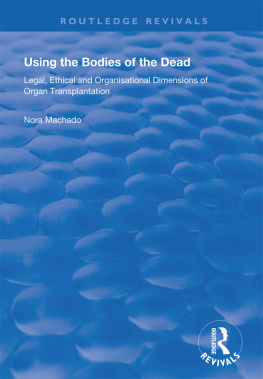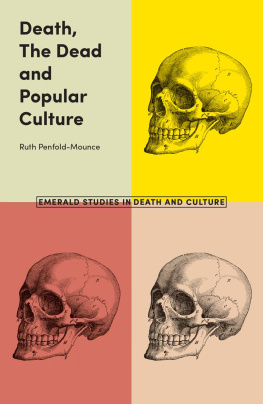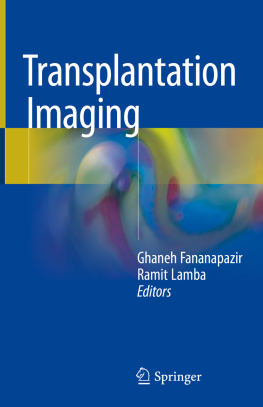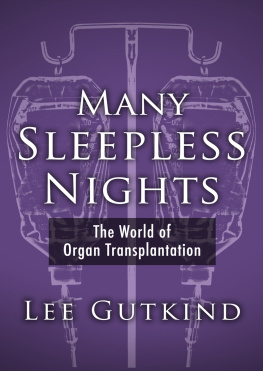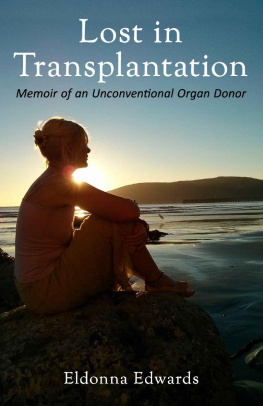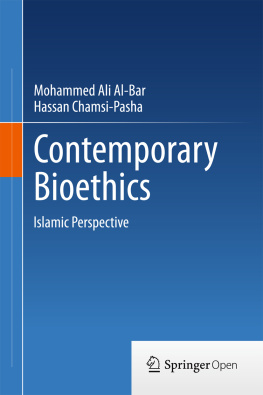USING THE BODIES OF THE DEAD
Using the Bodies of the Dead
Legal, ethical and organisational dimensions of organ transplantation
Nora Machado
University of Uppsala, Sweden
First published 1998 by Dartmouth and Ashgate Publishing
Reissued 2018 by Routledge
2 Park Square, Milton Park, Abingdon, Oxon, OX14 4RN
52 Vanderbilt Avenue, New York, NY 10017
Routledge is an imprint of the Taylor & Francis Group, an informa business
Copyright Nora Machado 1998
All rights reserved. No part of this book may be reprinted or reproduced or utilised in any form or by any electronic, mechanical, or other means, now known or hereafter invented, including photocopying and recording, or in any information storage or retrieval system, without permission in writing from the publishers.
Notice:
Product or corporate names may be trademarks or registered trademarks, and are used only for identification and explanation without intent to infringe.
Publishers Note
The publisher has gone to great lengths to ensure the quality of this reprint but points out that some imperfections in the original copies may be apparent.
Disclaimer
The publisher has made every effort to trace copyright holders and welcomes correspondence from those they have been unable to contact.
A Library of Congress record exists under LC control number:
ISBN 13: 978-1-138-38704-1 (hbk)
ISBN 13: 978-0-429-42645-2 (ebk)
This work, building on earlier studies of Renee Fox, Bernward Joerges, Roberta Simmons, among others, explores in depth the multi-dimensional and highly elusive character of organ transplantation as a social, technical, and cultural phenomenon. I have tried to bridge theoretically and methodologically the thick cultural analyses of Fox and Simmons, on the one hand, and the socio-technical perspective of Joerges, on the other. I introduce and apply a range of new concepts and models in analysing organ transplantation systems: the dissonances that appear to be endemic to these systems; the particular function of a number of hospital roles, rituals, and discourses in dealing with such dissonance and related conflict; the legal and normative regulation of body part extraction and allocation in large-scale systems; the cognitive and moral dilemmas which physicians, nurses, and next-of-kin face in the use of the bodies of the dead.
In examining the ethical aspects of organ transplantation, I try to avoid the highly decontextualized treatment of bio-medical ethics that characterise a great deal of the philosophical approach.
Much of my theoretical work is of a general character and should be of considerable interest even to those not engaged in issues of organ transplantation or bio-medical developments.
Nora Ines Machado
Florence, Italy
March 31, 1998
I am grateful to Beth Mama Ahlberg, Tom R. Burns, Bjrn Eriksson and Rene Fox for careful reading and critical suggestions of earlier versions of substantial parts of this manuscript. I also want to thank my colleagues from the Uppsala Theory Circle Seminars and others who have read parts of this work and provided constructive criticisms and advice: Bo Andersson, Torbjrn Bilgrd, Hkan Johansson, Gran Lanz, John Lilja, Mohammadrafi Mahmoodian, Anders Olsson, Pablo Suarez, Per Sundberg, Thorlief Petterson, and Hans Zetterberg.
I am also indebted to Dr. Lars Frdin and to Christina Bergstrm at the Transplantation Centre of Uppsala Academic Hospital for their openness and support; and also to interviewees and hospital personnel in a number of Swedish units who gave me their time and attention. Also, many thanks to Eurotransplant and Scandiatransplant, in particular to Frank Pedersen at Scandiatransplant, for being so service-minded, even for someone like myself who was not a client.
Finally, much of the research work presented in this book was possible because of the financial support from the Department of Sociology, University of Uppsala (a doctoral fellowship); the Swedish Council for Planning and Coordination of Research (FRN) funding a research project on organ transplantation; Law Foundation (Rttsfonden) (a grant); and the Selma Andersen Fund at Uppsala University (a post-doctoral fellowship).
Nora Machado
Uppsala, 1998
- BrB: Criminal Code ( Brottsbalken )
- HBP: Human body part
- ICU: Intensive care unit
- MF: Code of Statutes (ordinances and guidelines) for the Medical Services published by the National Board of Health. Since 1976, the heading Mf is replaced by SOSFS (M) ( Medicinal Frfattning )
- NICU: Neurological intensive care unit
- ONT: Organization Nacional de Transplantes (de Espaa)
- OPO: Organ procurement organisation
- OR: Operation room
- OTC: Organisational Theory of Cognitive Balance
- OTS: Organ transplantation system
- Proposition: Legislative Proposals ( Proposition ). The endorsement that the Administration presents to the Parliament in the process of promulgation of a law
- RF: Swedish Constitutional Act ( Regeringsformen). One of the fundamental acts of the Constitution that comprise the laws relating to the protection of the individual vis vis the state (infringement of the individual right by state organs). Thus it aims to guarantee the safety and security of the citizens in the society
- UAS: Uppsala University Hospital
- UNOS: United Network for Organ Sharing
The history of transplantation is, above all, a story of mythology, human fantasy, and innovation. Attempts at transplantation had been made for hundreds of years but typically resulted in death. The modern beginning of transplantation is the successful transfusion of blood. By the turn of the century, differences in human blood groups had been discovered, greatly reducing the risks of transfusions. Various attempts at solid organ transplantation were made in the first half of the century: a human kidney in Kiev in 1933, without success, and later at other medical centres in the 1940s and early 1950s, without greater success (although the physicians involved typically considered a "success" any survival for few hours or for a few days).
In 1954 Joseph E. Murray and associates successfully transplanted a kidney from one identical twin to another. During the remainder of the 1950s and throughout the 1960s, kidney transplantation increased in frequency. Organs came either from living relatives or non-heart-beating cadavers: however the cadaver kidney results were initially not as successful as those from genetically related living donors. Subsequently, not only kidney but heart transplantation (the first carried out by Christiaan Barnard in 1967) as well as other types of transplantation accelerated, particularly as knowledge about immunological defence mechanisms and ways of countering or neutralising them were developed.
Organ transplantation is today a well-established clinical treatment and part of the specialised surgical services in many hospitals in the world. The rate of successful organ replacements is quite high, particularly for kidneys, but also for the replacement of hearts, whole or parts of pancreas and livers. Today, a major development is ongoing experiments with animal grafts and genetic manipulation of animals to make their organs more compatible with human recipients.

